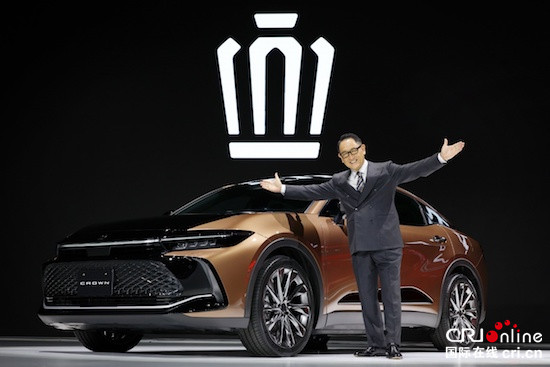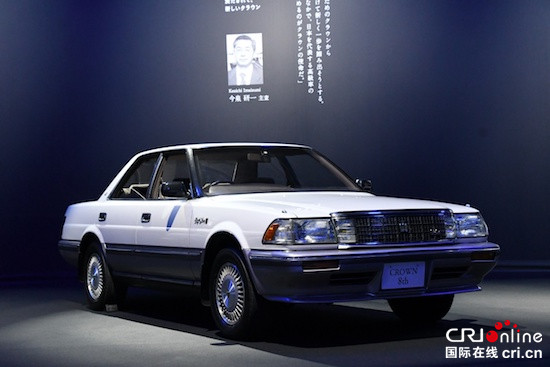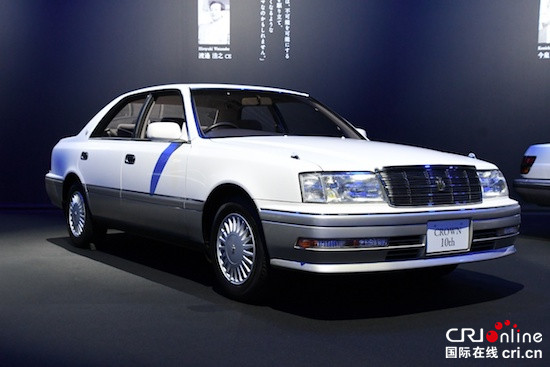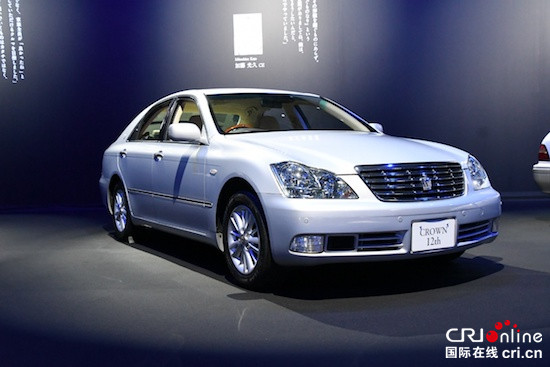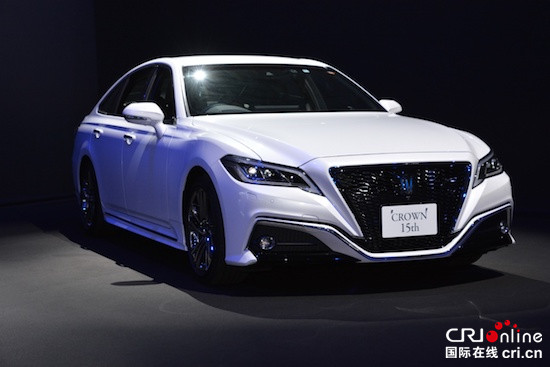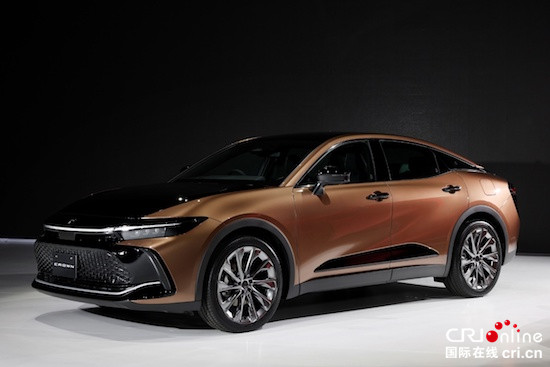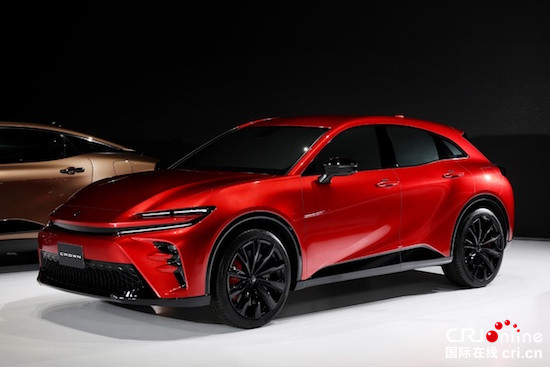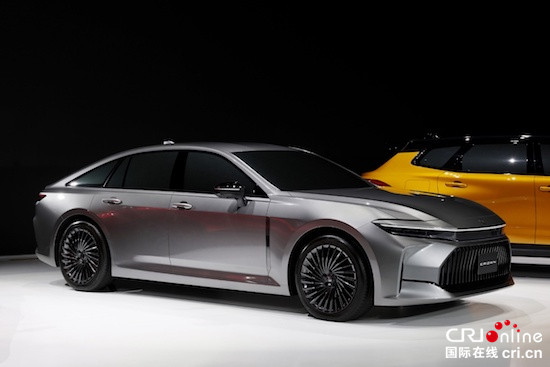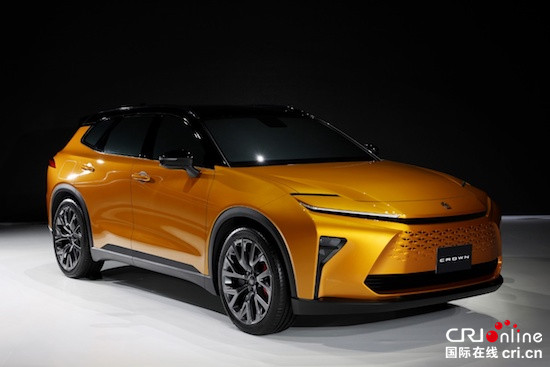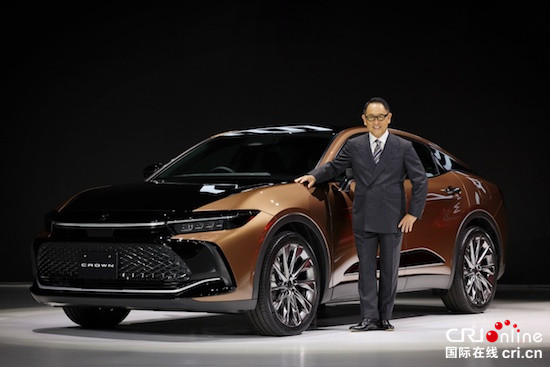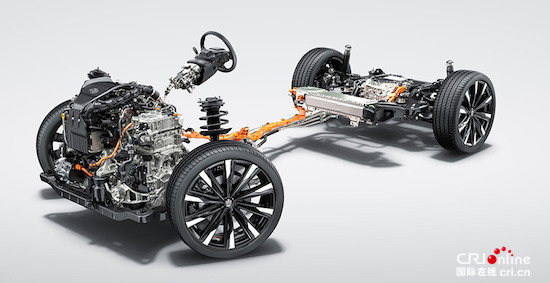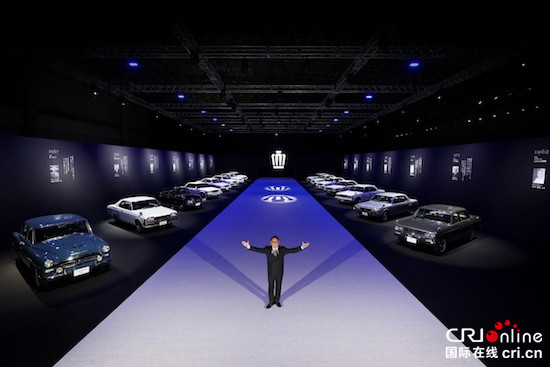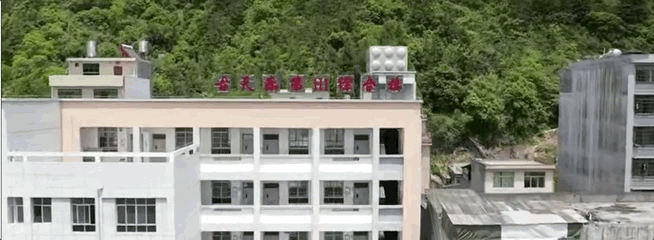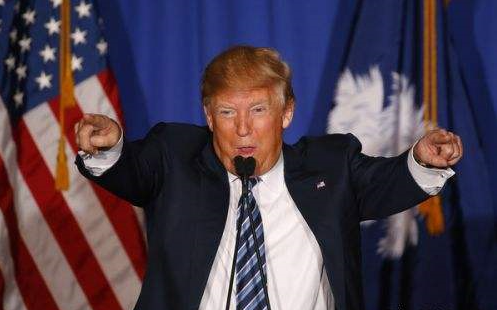

At the end of 2022, the outbreak of generative artificial intelligence brought artificial intelligence into people’s sight again. The discussion of artificial intelligence, which has been silent for a long time in the legal field, has risen again. The construction of smart courts is also accelerating, and whether generative artificial intelligence can help become an urgent problem. In fact, the application of artificial intelligence in smart courts is not a new topic. Most scholars have elaborated on the theory inside, but in fact, the construction of artificial intelligence in Chinese courts is relatively slow. Some problems mentioned in theory may not have appeared in practice, but the emergence of generative artificial intelligence has broken this situation. The application of artificial intelligence in smart courts needs to face the problems that were once "science fiction". By explaining the principle of llm-type generative artificial intelligence, it leads to the necessity of its application in smart courts. At the same time, it lists the existing commercial models and the practical application and future exploration of courts. Finally, the possible problems in practice are answered through legal provisions and technical operation.
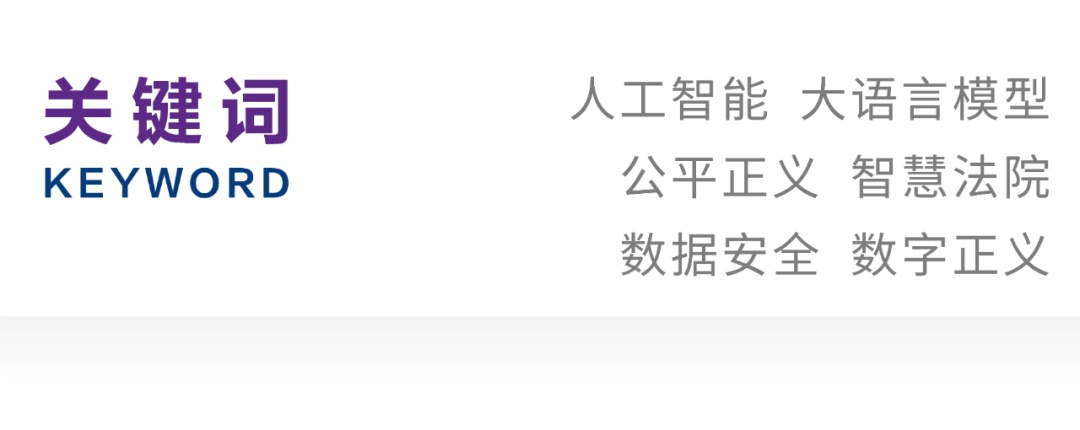
foreword
Since 2017, with the viral spread of alphago, artificial intelligence has become the hottest topic at that time. Similarly, discussions about smart courts and artificial intelligence have also exploded. Of course, the popularity of smart court+artificial intelligence did not last long. On the one hand, it is because there are other more novel contents, such as metauniverse and nft;; On the other hand, because artificial intelligence did not explode like people imagined, the sci-fi "robot judge" did not appear. It is precisely because of the slow development of artificial intelligence that most articles do not analyze the specific application of smart courts, and most of them focus on the theoretical research of artificial intelligence in smart courts, including but not limited to data security and algorithm risk.
"To sum up, although the research on legal artificial intelligence in the theoretical circle is lively, it is still in the pioneering stage, and there is still a lack of deep grasp and thinking about the current situation and future of the application of legal artificial intelligence. As for the suggestions on how to use legal artificial intelligence, it is only directional. Compared with the theoretical circle, the practical circle may have more expectations for legal artificial intelligence and take many practical actions. " The theoretical research on smart courts and artificial intelligence in China is very perfect, but many forward-looking issues have not received enough academic attention in the construction of smart courts. In academic discussions, the specific application in practice has not been considered too much. Therefore, this paper will focus on whether it can be applied to smart courts immediately, what the application scenario is, and the exploration of the future.
On December 9, 2022, the Supreme People’s Court issued "Opinions on Standardizing and Strengthening the Judicial Application of Artificial Intelligence" (hereinafter referred to as "Opinions on Artificial Intelligence"), listing specific objectives, principles and application scope. Among them, Article 2 explicitly mentions: "By 2025, a relatively complete judicial artificial intelligence technology application system will be basically established, providing all-round intelligent auxiliary support for justice for the people and justice, significantly reducing the workload of judges’ routine work, effectively ensuring clean justice, improving the level of judicial management, and innovatively serving social governance. By 2030, the application and theoretical system of judicial artificial intelligence technology with rule guidance and application demonstration effect will be built to provide high-level intelligent auxiliary support for the whole process of justice for the people and fair justice, and the application of normative principles will be widely recognized by the society, greatly reducing the workload of judges’ transactional work, effectively ensuring clean justice, accurately serving social governance, and fully demonstrating the application efficiency. " It can be seen that the judicial application of artificial intelligence is the general trend and the key direction of the construction of smart courts in the future.
Coincidentally, at the end of December, 2022, the large language model (llm), represented by the generative pre-trained transformer (gpt), began to spread all over the world, and its appearance broke the artificial intelligence market that had been silent for many years. Generative ai refers to the technology of generating text, pictures, sounds, videos, codes and other contents based on algorithms, models and rules. This is an unsupervised or partially supervised machine learning framework, and generates content by using statistics, probability, etc. Different from previous artificial intelligence, generative artificial intelligence can not only extract information, but also create content and learn its pattern and distribution by using existing digital content inspection training examples. This paper discusses llm-type generative artificial intelligence represented by chatgpt. The explosion of llm-type generative artificial intelligence obviously exceeds people’s imagination of artificial intelligence, and artificial intelligence that has been silent for a long time has once again entered people’s eyes. Before chatgpt appeared, the application of any artificial intelligence practice was still relatively basic, mainly such as grammar checking, language polishing, text translation, data analysis, etc. This kind of automation technology with almost no adaptive ability is often called weak artificial intelligence. howeverChatgpt llm-type generative artificial intelligence has strong natural language processing ability and strong artificial intelligence characteristics, and has the ability to directly generate content. While people are surprised, there are also many questions. Can it really liberate human productivity? Or is it just an assistant to the advanced version? Specific to the construction of smart courts, is there any risk in this kind of generative artificial intelligence? Can it help judges effectively? Can it seamlessly join the existing smart court construction? The author believes that there is no doubt that it can bring new changes to the construction of smart courts and show great application potential. Although there are many problems at this stage, it does not hinder its application in courts, which is also the significance of writing this article. Llm-type generative artificial intelligence is a new direction for artificial intelligence, and it is also a booster for the construction of smart courts. Perhaps llm-type generative artificial intelligence will open the era of real artificial intelligence judicial application.
First, the necessity of llm-type generative artificial intelligence in smart courts.
(1)
Definition of llm-type generative artificial intelligence
The specific application of generative artificial intelligence in smart courts is mainly llm-type generative artificial intelligence. The definition of llm-type generative artificial intelligence is emphasized in order to better understand the development process of this kind of artificial intelligence, so that it can be used better and clarify why llm-type generative artificial intelligence works. It is not difficult to find that chatgpt is very mature in many scenarios, such as article revision or translation, so only by understanding its definition can it be better used, instead of treating llm-type generative artificial intelligence like whispers. Although chatgpt is a technology to realize the large-scale language model of llm, llm was not widely discussed and used as an independent concept before chatgpt appeared, and then I will take chatgpt as an example, but it is only a concrete application of llm-type generative artificial intelligence after all, and it cannot be referred to as llm-type generative artificial intelligence by chatgpt alone.
The simple explanation of llm-type generative artificial intelligence is that it generates text, pictures and other contents based on llm model. The key is llm model, that is, large-scale language model, which refers to a language model with tens of millions of levels of parameters, which are trained on a large number of text data. The basic theory of llm model lies in natural language processing (nlp). The development stage of nlp is as follows: first, in the rule stage, people first acquire knowledge from data, sum up rules, write them out and teach them to machines, and then machines execute the rules to complete specific tasks. Then there is the statistical machine learning stage, in which knowledge is relayed by people and automatically learned from data by machines. Then there is the deep learning stage, in which the amount of labeled data is increased to tens of millions, and the typical pre-training stage is technology stack including transformer. Finally, at the stage of large-scale language model, it broke out from the end of 2022, with the aim of making machines understand human commands and follow human values. It can be seen that the ai tools in the previous stage were relatively mechanical, while llm-type generative artificial intelligence is a very large language model, with a huge amount of training data and model parameters. Therefore, in fact, llm-type generative artificial intelligence is not a sudden appearance, but a gradual change.
Next, we take the most common chatgpt as an example to analyze and extract the keywords of llm-type generative artificial intelligence. The so-called gpt pre-training is a pre-training language model based on transform model, and its training logic is as follows: First, corpus preparation, collecting a large number of text corpus from the Internet. The second is to preprocess the data, process the corpus, divide them into many independent sentences or paragraphs, and divide each sentence into words. After word segmentation, each word is converted into a number to generate a number sequence, and then a digital dictionary is constructed. Chatgpt training is to use these digital sequences to simulate scene experiments with transformer model, which requires a lot of manual intervention and fine-tuning the pre-training model by supervised learning. According to the reward model, the strategy is optimized, and then the output is generated. The pre-training of chatgpt should be based on forward transfer, reverse update and gradient convergence. The pre-training model reduces the cost of obtaining a higher level of artificial intelligence.
Here we extract several important keywords, data, model, pre-training and fine-tuning. Of course, it may be questioned why the transform model of chatgpt is not a key word, because the transform model is unique to ChatGPT, and the llm-type generative artificial intelligence chatglm-6b, which is similar to Tsinghua University’s open source, is based on the general language model(glm) architecture. In similar image fine-tuning, chatgpt also has its own unique rlhf technology, which is feedback learning from human feedback technology. By constructing human feedback data sets, a reward model is trained to imitate human preferences to score results.
In data, model, pre-training and fine-tuning, data and model are easy to understand, which is the starting point of llm generative artificial intelligence. In other words, there is no pre-training and fine-tuning without data and models. The latter two are the focus of llm-type generative artificial intelligence. Although the pre-training methods of llm-type generative artificial intelligence are different, there are still two key words at its core, namely embedding and prompt. prompt is an input prompting mechanism based on natural language generation model, which can guide the generation results of the model to some extent. Through prompt, we can provide some hints, conditions or contextual information to the model in the hope that the model can produce more accurate and expected output results. Embedding is the step of llm-type generative artificial intelligence to digest prompt, which is divided into word embedding and position embedding. Through the combination of the two and the application of the model, the output content can be obtained.
And fine-tuning, it is artificial to adjust the results of pre-training in order to achieve the target effect. It is not difficult to find that the operating principle of llm-type generative artificial intelligence actually matches the legal syllogism in legal practice, in which prompt stands for legal issues, embedding stands for the process of finding legal facts and norms, and fine-tuning is the final legal application. llm-type generative artificial intelligence is almost perfectly matched with the legal syllogism of "formal rule of law". Therefore, llm-type generative artificial intelligence has applicable space, but it also brings some problems.
(2)
Current situation of artificial intelligence application in smart courts.
Is llm-type generative artificial intelligence helpful to the construction of existing smart courts, and is it still a "science fiction imagination"? Can it still cover the construction of smart courts? The author believes that this needs to start with the current situation of the construction of smart courts in China. The construction of smart courts in China has been going on, and now it has reached the stage of smart courts 3.0. However, how to subdivide and manage the judicial application of artificial intelligence is still slightly lacking at this stage. Under the current situation, it is not conducive to the development to call all artificial intelligence applications in a unified way, so the author combines the provisions of "Artificial Intelligence Opinions" to sort out the current judicial application of artificial intelligence.
The author believes that the existing domestic judicial applications of artificial intelligence can be divided into two categories, one is non-nlp artificial intelligence, the other is bias and program application and data operation and maintenance management, and the typical examples are online litigation, electronic delivery, voice conversion and character ocr recognition. In fact, these artificial intelligence technologies are relatively mature, and the author has actually felt the convenience in practical application. For example, Internet online litigation and the construction of Internet courts, China is still at the forefront of the world, which also shows the achievements of our smart courts. There is also electronic file filing, which effectively solves a large number of transactional problems. It should be emphasized that non-nlp artificial intelligence actually does not need the intervention of llm model, and it has its own set of technologies. Although llm model can also be competent for voice conversion, character ocr recognition and translation, its effect is not much different from that of the existing technology. If llm-type generative artificial intelligence is forcibly promoted, it may be counterproductive. The other is nlp artificial intelligence. According to the nlp development stage mentioned above, the nlp artificial intelligence of the smart court is only a rule stage and a statistical machine learning stage, so the actual effect is not ideal. Nlp artificial intelligence is commonly used in smart courts, such as document assistant system, litigation navigation, legal retrieval and so on.
At this stage, an important problem in smart courts is the backward model. As far as document assistance is concerned, at present, at most, format typesetting is relatively smooth, and intelligent document generation is almost impossible, including simple procedural documents. Although there are templates, they still rely mainly on manual filling, which is not artificial intelligence at all. In addition, the practical operation of document proofreading is relatively mechanical, and even the correction effect of the same type of documents on the market can not be achieved. In terms of legal retrieval, which judges pay more attention to, it basically relies on manual input and self-retrieval, even the so-called intelligent query, it is difficult to achieve satisfactory results. Moreover, in addition to the backward model, the source of data is also very backward, completely relying on manual import of materials, and sometimes even the law can not be complete, let alone case retrieval. In fact, about the backward model and data. Professor Zuo Weimin also pointed out this problem, but it has not been solved yet. Of course, the data source of chatgpt, the representative of llm generative artificial intelligence, is also relatively small, and it will only be in 2021, but it can basically understand some legal facts, and at least play a certain auxiliary role in effect. In this case, the existing nlp artificial intelligence will only make judges feel exclusive. The so-called artificial intelligence can’t help at all, and it doesn’t relieve their work pressure. The artificial intelligence in academic discussion is more like a fable.
From the perspective of foreign countries, its development is basically consistent with that of China. There are mainly intelligent programs and case retrieval. Of course, nlp artificial intelligence has developed faster outside the country than in China. Some countries have developed legal expert systems and judicial discretion models and used them in judicial practice to provide guidance or reference for judges and prosecutors to handle cases. Among them, the well-known is the Risk Assessment Tool (compas) used by some American states. This tool has also caused extensive discussion in American academic circles. It is worth noting that some foreign judges began to try to use chatgpt to assist the referee.
It can be seen that before the outbreak of llm-type generative artificial intelligence, there were judicial applications of artificial intelligence both inside and outside the domain, but it is obvious that the judicial application effect of existing artificial intelligence is limited, and only some weak artificial intelligence can be assisted (even this is not effective compared with similar products on the market), similar to Q&A retrieval or intelligent assistance, it is almost non-existent. The emergence of llm-type generative artificial intelligence has brought a new way, which can be predicted to point out a new direction for the construction of smart courts.
(3)
Why do you need llm-type generative artificial intelligence
First of all, the Opinions on Artificial Intelligence emphasizes that people’s courts should constantly broaden the judicial application scenarios and scope of artificial intelligence when building smart courts. Through the above introduction, llm-type generative artificial intelligence is the latest stage of artificial intelligence achievement, and it is foreseeable that it will become more powerful and more operational in the future. When emphasizing the construction of smart courts, we should not turn a blind eye to new developments. Moreover, the construction of smart courts in China is in the forefront of the world, and it is inevitable to actively give back to llm-type generative artificial intelligence. By actively applying llm-type generative artificial intelligence to improve the practical judicial application of artificial intelligence, we can also keep ourselves at the forefront of artificial intelligence.
Secondly, llm-type generative artificial intelligence can effectively improve the application of nlp artificial intelligence in the current courts. As mentioned above, the model of nlp artificial intelligence in court is relatively backward, and the actual effect is not ideal. The application of llm-type generative artificial intelligence can alleviate this phenomenon, and through iterative model, it can make further progress even in the case of insufficient data sources. This can also effectively build a smart court. In practice, compared with now, llm-type generative artificial intelligence can help judges know the case quickly and accurately, saving a lot of time and energy. It can also extract valuable information from a large number of cases, provide reference for judges’ judgments, and improve the accuracy and fairness of judgments.
Finally, the new development of llm-type generative artificial intelligence can effectively alleviate judges’ worries about artificial intelligence. Some scholars have pointed out that the development mode of artificial intelligence at this stage is in the stage of research and development, application, improvement and promotion, and the wrong understanding of artificial intelligence by judges and other judicial personnel is not conducive to improving the accuracy of handling cases by judges and other judicial personnel, and is not conducive to the development and perfection of artificial intelligence in courts and other judicial fields. Although llm-type generative artificial intelligence is not perfect at present, it has achieved some initial results, and with the promotion of the Internet, judges’ cognition of llm-type generative artificial intelligence is still unfamiliar, but it has not produced great negative emotions. Therefore, strengthening the application of llm-type generative artificial intelligence can get rid of judges’ worries about artificial intelligence and make the construction of smart courts more fruitful.
To sum up, llm-type generative artificial intelligence is almost perfectly matched with the legal syllogism of "formal rule of law", which is very suitable for the vertical application of law. At the same time, llm-type generative artificial intelligence has a strong boost to the construction of today’s smart courts, and the necessity of applying llm-type generative artificial intelligence in smart courts is self-evident.
Second, the application of llm-type generative artificial intelligence in court
(1)
Application of existing legal llm-type generative artificial intelligence
Because there is no llm-type generative artificial intelligence in the current court application, the author will introduce the existing legal llm-type generative artificial intelligence, on the one hand, it is also an outpost for how to use llm-type generative artificial intelligence in the future smart court construction, on the other hand, it actually answers the above question about why llm-type generative artificial intelligence is needed, because the market gives the best answer.
The existing application of legal llm-type generative artificial intelligence can be divided into two types. One is to use the interface of the existing model, directly call api, and then fine-tune it yourself, such as applying langchain or supabase technology, and then deploy it locally. The existing type is the ai of Peking University Magic Weapon or the ai legal assistant. In fact, this class is not much different from chatgpt, so it is not over-described. The other is to use the open source model to pre-train, and now the common ones are powerlawglm, lawyer-llama, chatlaw and lawgpt. This kind of artificial intelligence can be regarded as legal llm-type generative artificial intelligence in the vertical field, and all of the above are reused under the open source model, and most of them are not directly commercially available but laboratory works.
Taking lawgpt as an example, the training process of lawgpt series models is divided into two stages: the first stage: expanding the legal vocabulary and pre-training the open-source models on large-scale legal documents and code data; the second stage: constructing a dialogue question-and-answer data set in the legal field, and instructing fine tuning based on the pre-training model. In fact, this is the same as the llm-type generative artificial intelligence keyword mentioned above. Its data sources are official data from China Inspection Network, China Judgment Document Network, National Judicial Examination Center of the Ministry of Justice, national laws and regulations database, legal technology competition data and legal question and answer data. Taking chatlaw as an example, its data is mainly composed of forums, news, laws, judicial interpretations, legal consultations, law examination questions and judgment documents, and then the dialogue data is constructed through cleaning and data enhancement.
It is not difficult to see that this is actually the same as the keywords mentioned above. The author introduces the application of existing legal llm-type generative artificial intelligence here. On the one hand, it plays an important role in the construction of smart courts. On the other hand, it actually introduces the operational logic of llm-type generative artificial intelligence again, which is closely related to legal syllogism and can be well applied to the vertical field of law. Similarly, after introducing the existing legal llm-type generative artificial intelligence, it seems that some problems of judicial application of artificial intelligence mentioned before have a more practical solution direction, which the author will respond to below.
The above-mentioned legal llm-type generative artificial intelligence appeared in the past six months. It can be seen that legal llm-type generative artificial intelligence is a hot direction, so the construction of smart courts also needs legal llm-type generative artificial intelligence. So how operable is it to be applied in court, and what is the direction of its future application? The answer will be given below.
(2)
Realistic landing and future exploration of the application of smart court
As mentioned above, llm-type generative artificial intelligence is a new stage of nlp, which can effectively improve the nlp application at this stage. At the same time, for non-nlp types, it has no improvement effect, and the concept of forced nesting will only be counterproductive, and this is a manifestation of the disconnection between practice and theory. The author believes that the following scenarios can be applied to llm-type generative artificial intelligence:
Scenario 1: Legal search, assisting judges in handling cases. The author thinks that the more mature application at this stage is to consult the legal content and save the time of manual retrieval. I think this application can be realized as soon as possible. From the practical point of view, taking chatgpt as an example, it basically gives an explanation when Chinese corpus is scarce. Therefore, this application can be predicted, and the actual effect is not very bad.
Chatlaw, for example, can basically answer the corresponding law retrieval questions. Of course, the biggest problem of legal retrieval is to ensure the credibility of data. As far as the above results are concerned, although it is basically available, in practice, local regulations have not been included, which has not solved the pain points of grass-roots courts well, but compared with the current mechanical manual retrieval or big data retrieval, the effect has been remarkable. However, what is lacking now is that the retrieval of specific legal documents has not been realized, which is also the direction that llm generative artificial intelligence needs to work hard in the vertical field of law.
The further conception, that is, llm-type generative artificial intelligence guesses the judgment result, is similar to the application of the current sentencing model, which shows that the laws and regulations, judicial interpretation, judgment cases, legal facts and evidence materials involved in the case are input, and then the corresponding judgment result is obtained. This kind of application is obviously professional and complex, and it really helps judges to judge quickly and improve their legal application ability. However, the author thinks that even if it is difficult to have a model to actually operate now, it can be used as the future development direction. Of course, many scholars have already discussed the possibility of using this point in the future, and there are many problems involved, such as data security, algorithm problems and whether it can replace judges. If it is to be used in the future, these problems must be solved first.
Scenario 2: Pre-ai litigation consultation. Pre-ai litigation consultation can effectively solve the work efficiency problem of the current court filing window, prevent judges from becoming pure legal consultants, and also play a certain role in popularizing the law. The author mentioned above that there are some similar applications in the realization stage, but the effect is limited to presenting the law and telling how to sue, and the answer effect is average, just "feeding information". Through the application of llm-type generative artificial intelligence, we can effectively answer the questions of the parties, at the same time, we can evaluate the litigation according to the facts provided by the parties, provide legal knowledge and litigation risk analysis for the parties, and give appropriate solutions. The parties can get the results they want only through simple consultation, thus making the litigation convenient and efficient and effectively reducing the litigation burden of the parties. This application can be placed in the court filing window, the court WeChat WeChat official account, and 12368, which liberates a lot of labor to a certain extent and can also solve the problem of many lawsuits at present. From a practical point of view, chatgpt can initially answer questions effectively, and I think this is also a scene that can be landed in the near future.
Chatlaw, for example, can basically answer the corresponding legal consultation questions, including but not limited to legal consultation, judicial examination consultation and so on. What needs to be clear is that when the smart court is arranged, the pre-ai litigation is only a reference for the parties and cannot be used in formal procedures, otherwise the court will be held hostage by the pre-ai. Pre-ai litigation consultation is a direction in which llm-type generative artificial intelligence can be put into practice quickly. The author thinks this can be the main direction of llm-type generative artificial intelligence’s smart court experiment.
Scenario 3: Legal document assistance. Llm-type generative artificial intelligence is more realistic in the near future to strengthen the ability of document modification. Nowadays, the revision of court documents is still relatively backward, and llm-type generative artificial intelligence can effectively solve this problem. At this point, chatgpt has become the mainstream direction of text retouching and modification. Of course, the most noteworthy thing is whether llm generative artificial intelligence can directly generate documents. In my opinion, for some procedural documents, such as summary procedure decisions, or rulings with simple contents, and judgments with fixed contents similar to those in criminal cases, at this stage, llm-type generative artificial intelligence can be tried to liberate judicial staff from heavy and boring procedures and pay better attention to the trial itself. For complex documents, the author thinks that further training is needed. From the practical point of view, chatgpt can only give a very abstract framework, which has no practical significance. Of course, with the update iteration of artificial intelligence application, the maturity and accuracy of its content will be improved continuously, and it will be closer to professional judges. But there are still many doubts about whether it can replace judges.
Third, the realistic response to the application problem of llm generative artificial intelligence
Llm-type generative artificial intelligence is a new direction of artificial intelligence, and its great progress has really put some artificial intelligence problems in front of legal people, and the previous "science fiction fantasy" may be realized soon. However, as the author mentioned, the theoretical discussion on the application of artificial intelligence in the judiciary in China is perfect, such as data security and algorithms, which have been discussed in detail by scholars. Back to the title, the author emphasizes that "realistic response" is actually an analysis of the key words of llm-type generative artificial intelligence and the existing Opinions on Artificial Intelligence. Many scholars have made detailed research on some advanced theoretical problems. The emergence of llm-type generative artificial intelligence is to amplify some previously discussed problems. However, these problems cannot prevent llm-type generative artificial intelligence from being applied in the construction of intelligent courts. The author believes that the advantages of llm-type generative artificial intelligence outweigh the disadvantages as long as it is effectively restricted. Interestingly, when the author inquired about the shortcomings of chatgpt’s application in China courts, he also gave the answer: the conclusion drawn by chatgpt may be influenced by the deviation of training data, and there is a risk of misjudgment. Chatgpt can’t consider the specific details and background of the case, and sometimes it ignores important information. Chatgpt can’t completely replace human judges at present, and some judgments need human wisdom and experience.
(1)
The data problem depends on who controls it.
First of all, all artificial intelligence can’t avoid the problem of data security. For data security, the author thinks that the court must pay more attention to data security than other industries, but llm-type generative artificial intelligence needs to deal with an extremely large amount of sensitive data, such as legal documents, cases, user information, etc., which may far exceed the current data volume. If there is not enough data security protection, it may lead to information leakage or malicious use. In fact, the principle of safety and legality is also explicitly mentioned in the Opinions on Artificial Intelligence. Therefore, for security problems, llm-type generative artificial intelligence can be used on the premise of ensuring security. But in fact, if you think about it carefully, the focus of data security is actually the protection of the parties’ information in the court trial stage, especially the file security of criminal files. Other data are actually public, and the data used by some legal llm-type generative artificial intelligence applications in the market mentioned above are also public data on the network, so there is no data security problem. The data security problem of llm-type generative artificial intelligence actually focuses on the data in the court stage, and whoever generates and manages it may be the best solution. Since you are so worried about data security, it may be the best way not to outsource, and court management of data can also effectively solve another problem of data, that is, whether the data itself is correct. If it is wrong data input, it will be wrong data anyway. Moreover, it is undeniable that other technology companies are more or less lacking in data, no matter who has the most comprehensive judicial data,That must belong to the court itself. In addition, there is a basic problem of data problem, which is the choice of model. Moreover, whether you choose the existing model or there will be a new model in the future, you need to use external resources, which inevitably leads to security problems. The author believes that it is more appropriate to choose an open source domestic data model at this time.
The author believes that the construction of the smart court itself should be led by the court, and other technical support needs to be guided by the court, so that it can not only solve the data problem, but also lead the next practical application. Moreover, many of the existing legal llm-type generative artificial intelligence applications introduced by the author above are projects carried out by university laboratories. There is no need to have a fear of difficulties for all artificial intelligence applications, and the profession belongs to the profession, but it does not mean that it is completely abandoned.
(2)
The algorithm problem depends on how to use it.
As for the algorithm of artificial intelligence, as the author mentioned many times above, many scholars have discussed it. The common problems are algorithm discrimination and algorithm black box.
Just like the court-dominated model mentioned by the author in the last paragraph, if the court dominates the application of llm-type generative artificial intelligence, then the problem of algorithm discrimination and algorithm black box can be effectively controlled, and the court’s active participation in the formulation of the algorithm can eliminate the unfavorable factors of the algorithm.
In fact, the author has introduced some operational diagrams of llm-type generative artificial intelligence applications above. It is not difficult to see that the principle of the pre-training stage is not complicated, especially when the model is open source, and there is no so-called algorithm black box problem. In terms of embedding technology, it is actually the splitting and integration of data. If it is open source, it can actually predict the input results. This is also in line with the provisions on transparency in the Opinions on Artificial Intelligence.
At present, the algorithm problem of llm generative artificial intelligence focuses on the fine-tuning stage, so this stage depends entirely on human participation, and if someone participates, there will be the above-mentioned algorithm discrimination and algorithm black box problem. The author thinks that the more appropriate solution is that the court dominates the algorithm process and allocates relevant personnel to participate in the algorithm calculation process.
In fact, under the premise that the principle of auxiliary trial has been clearly defined in the Opinions on Artificial Intelligence, the algorithm problem in the trial process is actually a pseudo-problem, because the final decision-maker is in the hands of the judge, and the discrimination and black box problem of the algorithm will actually return to the professional ethics of the judge, so it is difficult to call it an algorithm problem. Because the "robot judge" can no longer exist, there is no risk in the application of artificial intelligence as long as the principle is adhered to under the premise that the Supreme Court has determined the principle. However, the author mentioned a problem in the previous article, that is, when doing pre-ai consultation, the algorithm problem will be more prominent. On the one hand, it can be effectively handled through the above means. On the other hand, through the open source data model, ensuring predictability can also alleviate the risk of pre-ai consultation and truly let legal consultation enter ordinary people.
(3)
Fairness and justice are the bottom line.
Fairness and justice are the bottom line of justice. Under the premise that the principle of auxiliary trial has been clearly defined in the Opinions on Artificial Intelligence, how to ensure fairness and justice through llm-type generative artificial intelligence is the most critical direction.
Looking back to now, the focus of this paper is on the application of the court, and it is true that llm-type generative artificial intelligence can effectively promote the construction of smart courts, but the question is how to choose other litigants when the court uses these advanced artificial intelligence. According to the author’s previous statement, there have been many legal llm-type generative artificial intelligence on the market, and litigants can choose. However, the reality is that the data source of the court is the most comprehensive, and other market-oriented models certainly can’t reach this level. At the same time, since it is market-oriented, not all participants in the proceedings may have the money to buy it, let alone the defendants in criminal proceedings. Scholars in Europe and the United States have also pointed out that this obviously violates the principle of "equality of arms". This is a real problem, which violates the principle of fairness and justice. One method is the open source model, which can be used by all litigants. This can really solve the problem, but the problem is that opening all materials will only make the court lose control of llm-type generative artificial intelligence. When litigants take the results generated by artificial intelligence to defend, the court is obviously in a passive position. Moreover, under the premise of clarifying the principle of auxiliary trial, it is actually to avoid the defects of llm-type generative artificial intelligence. If it is used open source, it will only expose the defects again.
Therefore, the author thinks that the best way to solve the problem is to let the judge clearly use the scenes and results of llm-type generative artificial intelligence, that is, the use of this process needs to be displayed to the outside world. Above, the author mentioned some recent applications of llm-type generative artificial intelligence abroad, and these judges made it clear that they were only auxiliary. Even if they were not separately stated in the judgment, they would clearly indicate that they would inform the parties that they had used llm-type generative artificial intelligence. The author believes that if llm-type generative artificial intelligence is used in court on a large scale, the presiding judge should inform all parties that he may use llm-type generative artificial intelligence to assist in judgment. What I emphasize here is this kind of auxiliary judgment, not looking up information. If we just look up information, we don’t need to explain the participants in the lawsuit. And if the judge makes some auxiliary judgments through llm-type generative artificial intelligence, and the judge in charge adopts this auxiliary judgment result. The author thinks that the judge in charge should show in the judgment why he used llm-type generative artificial intelligence to provide trial-assisted results, and should not neglect judicial justice because of the application of artificial intelligence. In addition, for litigants, they can also apply to the court to use llm-type generative artificial intelligence. Generally speaking, the application of llm generative artificial intelligence in court trial practice needs to adhere to the principle of openness in the whole process. Only in this way can people’s doubts about llm generative artificial intelligence be eliminated and justice be more fair and just.
tag
With the development of Smart Court 4.0, artificial intelligence will fully empower all business links of the court. At present, some applications of artificial intelligence technology are just the tip of the iceberg. With the development of llm-type generative artificial intelligence, more and more mature artificial intelligence products will serve the court, comprehensively deepen the construction of smart courts, improve the efficiency of judicial trials, and achieve a higher level of digital justice.
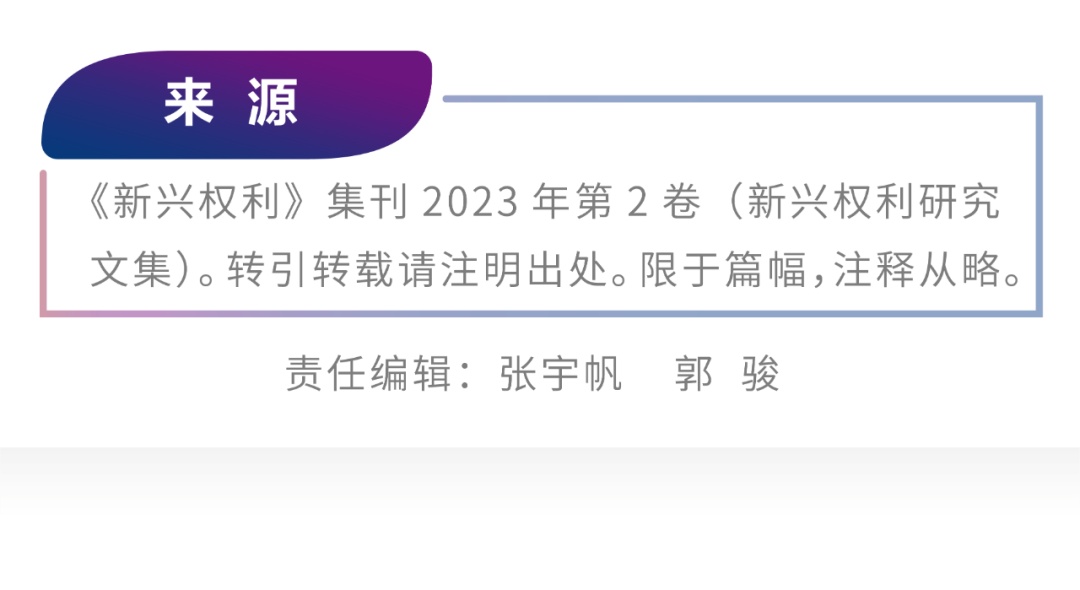
Wonderful review of the past
Ni Zihan | A New Solution to Data Compliance of Generative Artificial Intelligence Enterprises under the Path of Separation of Three Powers
Zheng Sen | On the Copyright Law Regulation of Songs Generated by aigc
Criminal Law Protection of Yang Zi ‘an | |chatgpt Artificial Intelligence Products
Research on Copyright of Artificial Intelligence Products by Tang Qirou
Zhou Jinli | Copyright and Default Ownership Distribution of Artificial Intelligence Generated Content —— Also on the Selection Probability Criteria for Judging the Originality of Works
Zhao Guoqing | On the Copyright Law Regulation of Content Generated by Virtual Digital Man Technology
Official website, Shanghai Law Society
http://www.sls.org.cn

Shangguan author: Shanghai Law Society


















